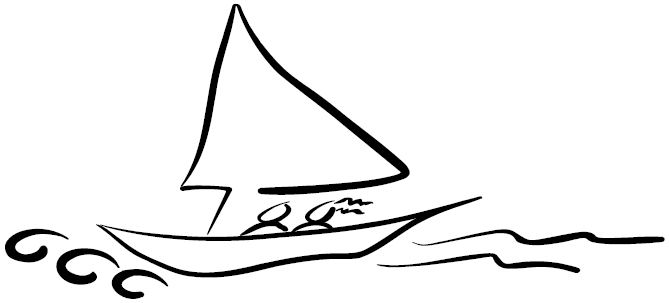
Appendix F
Critical Saltwater Habitats
Kelp beds, eelgrass beds, herring spawning areas, smelt spawning areas and other critical salt water habitats are designated as “critical areas” in WAC 365.190.080(5)(a)(4). The guidelines for classifying critical areas also include commercial and recreational shellfish areas. The Department of Fish and Wildlife has identified the following four critical areas (kelp beds, eelgrass beds, herring spawning areas, smelt spawning areas) and the habitats of several other salt water fish as salt water habitats of special concern. These additional habitats include Pacific sand lance spawning beds, rock sole spawning beds, rockfish settlement and nursery areas and lingcod settlement and nursery areas.
Critical salt water habitats are:
a. Kelp beds, which are members of the brown algal family Laminariales, including:
• Alaria marginata
• Alaria nana
• Alaria tenuifolia
• Egregia menziesii
• Eisenia arborea
• Pterygophora californica
• Agarum cribosum
• Agarum fimbriatum
• Costaria costata
• Cymathere triplicata
• Hedophyllum sessile
• Laminaria spp.
• Pleurophycus gardneri
• Dictyoneuropsis reticulata
• Dictyoneurum californicum
• Lessioniopsis littoralis
• Macrocystis integrifolia
• Nereocystis luetkeana and,
• Postelsia palmaformis
Kelp beds are found in marine and estuarine intertidal and subtidal areas with a depth of up to 15 meters below mean lower low water (MLLW). The beds can be found on various bottom materials including rocks, boulders, mixed-fines (mixed sand and mud with little gravel), mixed coarse (mixed cobbles, gravel, shell and sand) and cobble.
b. Eelgrass beds (Zostera spp). Eelgrass beds are found in marine and estuarine intertidal and subtidal areas. Zostera marina tends to favor the lower parts of the intertidal areas and Zostera japonica the higher elevations. Zostera spp. are generally found no deeper than 4 meters below mean lower low water (MLLW). Zostera spp. beds can be found on muddy bottoms, sandy bottoms as well as mixed-fine sand bottoms.
c. Surf smelt (Hypomesus pretiosus) spawning beds. Surf smelt spawning beds are located in the upper portions of sand or gravel beaches within the intertidal areas.
d. Pacific herring (Clupea harengus pallasi) spawning beds. Pacific herring spawning beds include the lower portions of salt water beaches within the intertidal areas, eelgrass beds, kelp beds and other types of salt water vegetation.
e. Pacific sand lance (Ammodytes hexapterus) spawning beds. Pacific sand lance spawning beds are located in the upper portions of sand or gravel beaches within the intertidal areas.
f. Rock sole (Lepidopsetta bilineata) spawning beds. Rock sole spawning beds are located in the upper and middle portion of sand or gravel beaches within the intertidal areas.
g. Rockfish (Sebastes spp.) settlement and nursery areas. Rockfish settlement and nursery areas are located in kelp beds, in eelgrass beds and on other types of salt water vegetation.
h. Lingcod (Ophiodon elongates) settlement and nursery areas. Lingcod settlement and nursery areas are located within the intertidal areas and subtidal areas with sand beds, eelgrass, subtidal worm tubes or other bed materials.
i. Shellfish beds. The following shellfish beds are included:
• Pacific oyster (Crassostrea gigas)
• Olympia oyster (Ostrea lurida)
• Razor clam (Silqua patula)
• Native little neck clam (Protothaca staminea)
• Manila clam (Venerupis japonica)
• Butter clam (Saxidomus giganteus)
• Geoduck (Panope generosa)
• Horse clam (Scizothaerus nuttalli, Scizothaerus capax)
• Cockle (Clinocardium nuttalli)
• Macoma (Macoma spp.)
• Eastern soft shell clam (Mya arenaria)
j. Commercial and recreational shellfish beds, mud flats, and intertidal habitats with vascular plants.
For Updates
Information on priority species and habitats, species of concern and federally listed marine species can be accessed at the following web sites.
• http://www.wa.gov/wdfw/wlm/diversty/soc/concern.htm
• http://www.wa.gov/wdfw/hab/phspage.htm
• Puget Sound Chinook - http://www.nwfsc.noaa.gov/pubs/tm/tm35/index.htm.
• Hood Canal Summer chum - http://www.nwfsc.noaa.gov/pubs/tm/tm35/index.htm and http://www.wa.gov/wdfw/fish/chum/chum.htm.
• Federally protected marine fishes, plants, invertebrates and marine mammals - http://www.nmfs.noaa.gov/prot_res/prot_res.html.
• http://www.wa.gov/wdfw/wlm/diversty/soc/endanger.htm
• http://www.wa.gov/wdfw/wlm/diversty/soc/soc.htm
• http://www.wa.gov/wdfw/fish/forage/forage.htm


